Home>Garden Essentials>What Nitrogen Fixation And Crop Rotation
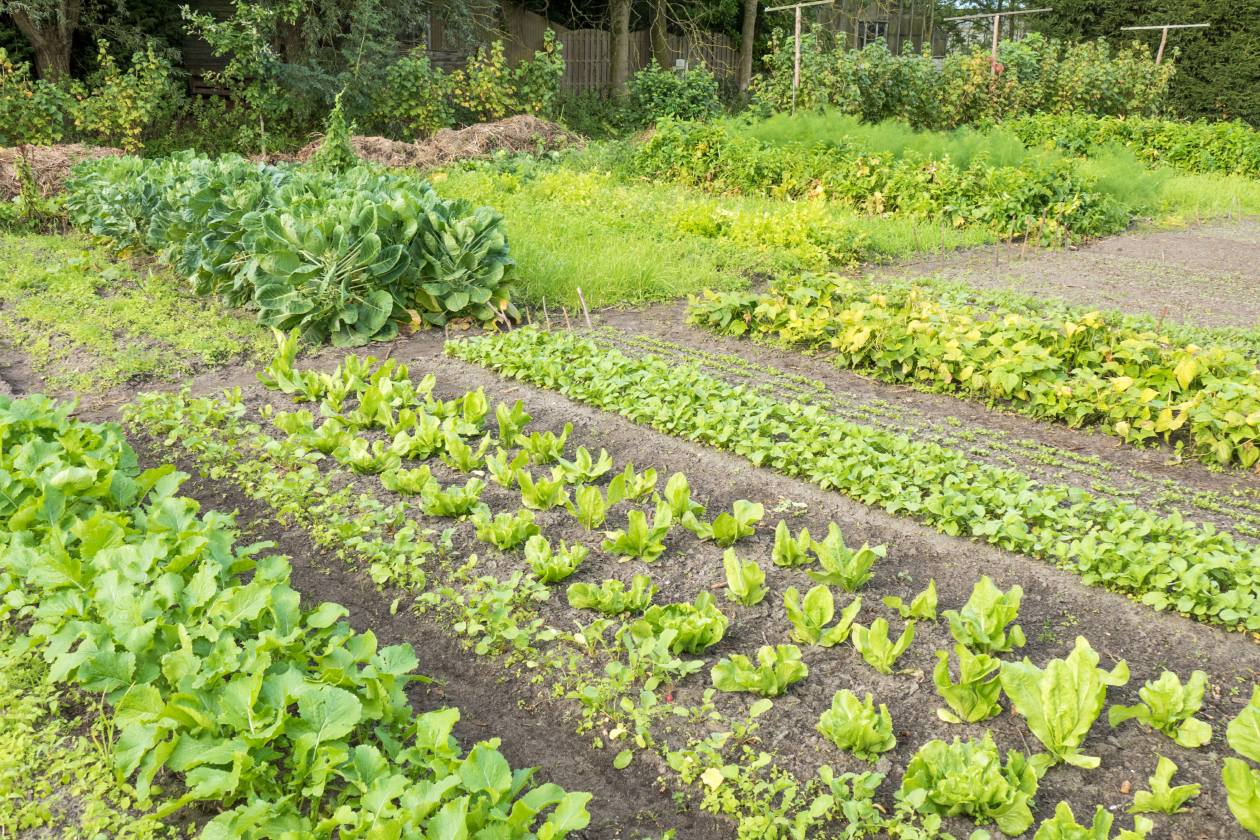

Garden Essentials
What Nitrogen Fixation And Crop Rotation
Modified: March 15, 2024
Discover the benefits of nitrogen fixation and crop rotation in your garden. Enhance soil health and increase plant yield by implementing these sustainable practices.
(Many of the links in this article redirect to a specific reviewed product. Your purchase of these products through affiliate links helps to generate commission for Storables.com, at no extra cost. Learn more)
Introduction
Nitrogen fixation and crop rotation are two essential practices in the field of agriculture that play a crucial role in sustainable farming and ensuring healthy plant growth. These practices are intertwined and work in harmony to improve soil fertility, increase crop yields, and reduce the reliance on synthetic fertilizers.
Nitrogen is an essential nutrient for plant growth, and it is often the limiting factor in agricultural productivity. While atmospheric nitrogen makes up around 78% of the air we breathe, it is in a form that plants cannot directly utilize. Nitrogen fixation is the process by which certain bacteria, called nitrogen-fixing bacteria, convert atmospheric nitrogen into a form that plants can absorb and utilize.
Crop rotation, on the other hand, is the practice of systematically growing different crops in a specific sequence on the same piece of land. This rotational system offers several benefits, including pest and disease control, weed suppression, and improved soil structure. When combined with nitrogen fixation, crop rotation becomes even more powerful, as it helps to replenish soil nutrients and maintain a healthy balance in the ecosystem.
This article will delve into the importance of nitrogen fixation and crop rotation in sustainable agriculture. We will explore the concept of nitrogen fixation, the different types of nitrogen fixation, and the role of legumes in this process. Additionally, we will discuss the benefits of implementing crop rotation strategies and how nitrogen fixation and crop rotation can be effectively integrated into farming practices. Lastly, we will address the challenges and limitations associated with these practices.
By understanding the significance of nitrogen fixation and crop rotation, farmers and gardeners can adopt sustainable practices that not only protect the environment but also promote optimal plant growth and yield. Let’s embark on this journey to explore the world of nitrogen fixation and crop rotation and unlock the secrets to a thriving garden or farm.
Key Takeaways:
- Nitrogen fixation and crop rotation work together to naturally enrich soil, reduce the need for chemical fertilizers, and promote healthy plant growth, benefiting both the environment and farmers.
- Leguminous plants and diverse crop rotations play a vital role in sustainable farming, offering solutions to soil fertility, pest control, and weed suppression, contributing to a greener future.
The Importance of Nitrogen Fixation
Nitrogen is a vital nutrient for plant growth and development. It is an essential component of proteins, enzymes, and chlorophyll, all of which play a critical role in various metabolic processes within plants. However, despite the abundance of nitrogen in the atmosphere, most plants are unable to directly obtain this form of nitrogen. This is where nitrogen fixation becomes crucial.
Nitrogen fixation is the process by which certain bacteria, known as nitrogen-fixing bacteria, convert atmospheric nitrogen into a usable form for plants. These bacteria have a unique ability to break the strong triple bond between nitrogen (N2) molecules and convert them into ammonium (NH4+), which can be readily taken up by plants.
The significance of nitrogen fixation lies in the fact that it reduces the reliance on synthetic fertilizers. Synthetic fertilizers are expensive, harmful to the environment, and can lead to nutrient imbalances in the soil. By harnessing the power of nitrogen fixation, farmers can reduce the need for chemical fertilizers and cultivate crops more sustainably.
Moreover, nitrogen fixation has a positive impact on the overall health and productivity of plants. When plants have access to an adequate supply of nitrogen, they exhibit enhanced growth, increased seed production, and improved resilience against environmental stresses such as drought and disease.
In addition to its direct benefits to plants, nitrogen fixation also contributes to soil health. Nitrogen-fixing bacteria form symbiotic relationships with certain leguminous plants, such as peas, beans, and clovers. These bacteria take up residence in the root nodules of these plants, forming structures called nodules. Inside these nodules, nitrogen-fixing bacteria convert atmospheric nitrogen into ammonium, which is released into the soil as a nutrient source.
The release of ammonium from the nodules not only benefits the leguminous plants themselves but also neighboring non-leguminous plants. When the leguminous plants die or are incorporated into the soil, the nitrogen they have acquired through nitrogen fixation becomes available to other plants in the vicinity. This process contributes to the overall enrichment of soil fertility and increases the availability of nitrogen to support the growth of various crops.
Overall, nitrogen fixation plays a crucial role in sustainable agriculture by providing a natural and environmentally friendly source of nitrogen for plant growth. By harnessing the power of nitrogen-fixing bacteria and incorporating nitrogen-fixing plants into farming systems, farmers can reduce their dependence on synthetic fertilizers, enhance soil fertility, and promote the overall health and productivity of their crops.
Understanding Nitrogen Fixation
Nitrogen fixation is a complex biological process that occurs in nature and involves a symbiotic relationship between certain bacteria and plants. To understand nitrogen fixation, it is essential to explore the mechanisms and factors that influence this process.
The first step in nitrogen fixation involves the conversion of atmospheric nitrogen (N2) into a usable form. This conversion is facilitated by specific bacteria known as nitrogen-fixing bacteria. These bacteria have the unique ability to break the strong triple bond between nitrogen molecules and convert them into ammonium (NH4+), a form that plants can absorb and utilize.
Nitrogen-fixing bacteria can be categorized into two main types: free-living bacteria and symbiotic bacteria. Free-living bacteria, such as Azotobacter and Azospirillum, inhabit the soil independently and fix nitrogen without any direct association with plants. Symbiotic bacteria, on the other hand, establish a mutualistic relationship with certain plants, particularly leguminous plants.
Leguminous plants, which include crops like soybeans, peas, and lentils, contain specialized structures in their roots called nodules. These nodules provide a suitable environment for symbiotic nitrogen-fixing bacteria to establish and thrive. The bacteria enter the plant’s root system and colonize the cells within the nodules, forming a beneficial relationship. In return for a supply of energy-rich carbohydrates from the plant, the bacteria convert atmospheric nitrogen into ammonium through the process of nitrogen fixation.
Within the nodules, the nitrogen-fixing bacteria possess an enzyme called nitrogenase, which is responsible for the conversion of atmospheric nitrogen. Nitrogenase requires certain conditions to be optimal for efficient nitrogen fixation to occur. These conditions include a low-oxygen environment, a slightly acidic pH, and the presence of energy-rich compounds for the bacteria to fuel their metabolic processes.
Despite its importance, nitrogen fixation is an energy-intensive process for both the plants and the associated bacteria. The plants invest a significant amount of energy in producing carbohydrates to support the symbiotic bacteria’s nitrogen fixation activity. In return, the nitrogen provided by the bacteria becomes available for the plant’s growth and development, contributing to its overall health and productivity.
It is worth noting that while nitrogen fixation is a natural process, its efficiency can be influenced by various factors. Environmental conditions such as temperature, moisture, and soil pH can affect the activity of nitrogen-fixing bacteria. Additionally, the availability of other essential nutrients such as phosphorus and molybdenum can also impact nitrogen fixation.
Understanding the mechanisms and factors that influence nitrogen fixation is crucial for optimizing this process in agriculture. By creating suitable conditions and promoting the growth of nitrogen-fixing bacteria, farmers can enhance the availability of nitrogen for their crops and reduce the need for synthetic fertilizers.
In the next section, we will explore the different types of nitrogen fixation and delve deeper into the role of legumes in this process.
Types of Nitrogen Fixation
Nitrogen fixation is a fundamental process that occurs in various forms in nature. Understanding the different types of nitrogen fixation can shed light on the diverse mechanisms through which nitrogen is made available to plants.
1. Biological Nitrogen Fixation (BNF): Biological nitrogen fixation refers to the process by which nitrogen-fixing bacteria convert atmospheric nitrogen (N2) into a usable form, mainly ammonium (NH4+). As mentioned earlier, nitrogen-fixing bacteria can either be free-living or symbiotic with certain plants. Free-living nitrogen-fixing bacteria, such as Azotobacter and Azospirillum, exist independently in the soil and fix nitrogen without any direct association with plants. Symbiotic nitrogen-fixing bacteria, on the other hand, form a mutualistic relationship with specific plants, particularly leguminous plants.
2. Industrial Nitrogen Fixation: Industrial nitrogen fixation is a human-made process that involves the synthesis of ammonia (NH3) from atmospheric nitrogen. The Haber-Bosch process, developed in the early 20th century, revolutionized agriculture by allowing the production of synthetic fertilizers on a large scale. This process involves the combination of nitrogen and hydrogen gases under high pressure and temperature, facilitated by iron catalysts. Industrial nitrogen fixation has played a significant role in increasing agricultural productivity but is associated with environmental concerns, such as greenhouse gas emissions and water pollution.
3. Lightning Fixation: Lightning fixation, also known as atmospheric nitrogen fixation, is a natural process that occurs during thunderstorms. The intense heat generated by the electrical discharge breaks down the nitrogen molecules in the atmosphere and combines them with oxygen, forming nitrogen oxides. These nitrogen oxides then dissolve in rainwater and fall to the ground, where they are incorporated into the soil. Lightning fixation is a relatively small contributor to the overall nitrogen cycle but can have localized effects on soil fertility.
4. Biological Nitrification: While not strictly a form of nitrogen fixation, biological nitrification is an essential process in the nitrogen cycle. Nitrification is carried out by specific bacteria that convert ammonium (NH4+) into nitrite (NO2-) and subsequently into nitrate (NO3-). This conversion makes nitrogen more accessible to plants, as nitrate is the primary form of nitrogen that can be readily absorbed by plant roots.
Each type of nitrogen fixation contributes to the overall availability of nitrogen for plants in different ways. Biological nitrogen fixation is the most important in agriculture, as it provides a sustainable and natural source of nitrogen for plant growth while reducing the dependence on synthetic fertilizers. Industrial nitrogen fixation has its place, but its environmental impact needs to be carefully managed. Lightning fixation and biological nitrification, although less influential on a large scale, still play important roles in maintaining soil fertility and the overall nitrogen cycle.
Now that we have explored the different types of nitrogen fixation, let’s delve into the role of legumes in this process and how they contribute to sustainable agriculture.
The Role of Legumes in Nitrogen Fixation
Legumes play a significant role in the process of nitrogen fixation, particularly in the context of agricultural systems. These plants have a unique ability to form symbiotic relationships with nitrogen-fixing bacteria, which enables them to acquire nitrogen from the atmosphere and convert it into a usable form. Understanding the role of legumes in nitrogen fixation is essential for harnessing the potential of these plants in sustainable farming practices.
Leguminous plants, including crops like soybeans, peas, lentils, and clovers, have specialized structures in their roots called nodules. These nodules serve as the habitat for nitrogen-fixing bacteria, which colonize the plant’s root cells. Within the nodules, the bacteria convert atmospheric nitrogen (N2) into ammonium (NH4+), a form of nitrogen that can be readily utilized by plants.
The symbiotic relationship between legumes and nitrogen-fixing bacteria is mutually beneficial. The plants provide a safe and nutrient-rich environment for the bacteria to thrive, supplying them with carbohydrates produced through photosynthesis. In return, the bacteria convert atmospheric nitrogen into a usable form, providing a vital nutrient source for the leguminous plants.
This partnership between legumes and nitrogen-fixing bacteria has several advantages in agricultural systems:
1. Nitrogen Supply: Legumes have the ability to acquire significant amounts of nitrogen through nitrogen fixation. By hosting nitrogen-fixing bacteria in their root nodules, legumes can effectively utilize atmospheric nitrogen, reducing the need for external nitrogen inputs such as synthetic fertilizers. This makes legumes valuable crops for improving soil fertility and reducing nitrogen runoff, which can be harmful to the environment.
2. Nitrogen Transfer: The nitrogen fixed by legumes is not only beneficial to the leguminous plants themselves but also to neighboring non-leguminous plants. When leguminous plants die or are decomposed, the nitrogen they have acquired through nitrogen fixation is released into the soil, making it available for other plants in the vicinity. This transfer of nitrogen enhances the overall fertility of the soil and supports the growth of various crops.
3. Crop Rotation: The presence of leguminous plants in crop rotation systems can contribute to the replenishment of nitrogen in the soil. By alternating between legume crops and non-legume crops, farmers can harness the nitrogen-fixing abilities of legumes to benefit subsequent crops. This practice helps maintain soil fertility, reduces the reliance on synthetic fertilizers, and enhances the overall productivity of the agricultural system.
It is important to note that not all legumes have the same capacity for nitrogen fixation. The effectiveness of nitrogen fixation can vary depending on the specific legume species, the variety within the species, and environmental conditions such as soil type, moisture, and temperature. Therefore, careful selection of legume crops and appropriate management practices are crucial for maximizing the benefits of nitrogen fixation.
The role of legumes in nitrogen fixation is a valuable asset in sustainable agriculture. By incorporating leguminous crops into farming systems, farmers can harness the power of nitrogen fixation to improve soil fertility, reduce the environmental impact of synthetic fertilizers, and promote a more balanced and resilient ecosystem.
Next, we will explore the benefits of crop rotation and how it complements the practice of nitrogen fixation.
Tip: Nitrogen fixation is the process of converting nitrogen gas into a form that plants can use. Crop rotation helps improve soil fertility by alternating the types of crops grown in a specific area each season.
Read more: What Was Crop Rotation?
Benefits of Crop Rotation
Crop rotation is a time-honored agricultural practice that involves growing different crops in a specific sequence on the same piece of land. This practice offers numerous benefits, both agronomically and environmentally. Let’s delve into the advantages of implementing crop rotation strategies in farming systems.
1. Soil Fertility and Nutrient Management: One of the primary benefits of crop rotation is the improvement of soil fertility. Different crops have varying nutrient requirements, and by rotating crops, farmers can minimize nutrient depletion and maintain a balanced nutrient profile in the soil. This helps to ensure that the soil has a sufficient supply of essential nutrients for optimal crop growth. Additionally, the incorporation of nitrogen-fixing leguminous crops in rotation contributes to the replenishment of nitrogen in the soil, reducing the need for synthetic fertilizers and promoting sustainable nutrient management.
2. Pest and Disease Control: Crop rotation is an effective strategy for managing pests and diseases. By planting crops from different families in rotation, farmers can disrupt the life cycles of pests and pathogens that are specific to certain plant species. This reduces the risk of pest buildup and the spread of diseases, minimizing the need for chemical pesticides and promoting natural pest control. Additionally, some crops have allelopathic properties, meaning they release chemical compounds that can suppress the growth of weeds, further enhancing the weed control aspect of crop rotation.
3. Weed Suppression: Crop rotation can help suppress weeds and reduce weed pressure. Different crops have different growth habits and can effectively compete with weeds, thus reducing weed infestations. Furthermore, the rotation of crops with different planting and harvesting times can interrupt the weed life cycle and prevent weed seed production. By reducing the reliance on herbicides, crop rotation promotes more sustainable weed management practices.
4. Soil Structure and Health: Crop rotation has a positive impact on soil structure and health. Different crops have varying root systems and growth patterns, which can help improve soil aggregation and organic matter content. Deep-rooted crops, for example, can penetrate and break up compacted soil, improving water infiltration and nutrient availability. Furthermore, crop rotation contributes to the diversity of soil microorganisms, fostering a more balanced soil microbiome and enhancing overall soil health.
5. Diversification and Risk Management: Crop rotation diversifies the farm’s production, reducing the vulnerability to market fluctuations and climate risks. By growing a variety of crops, farmers can spread their risks and ensure a more stable income. Additionally, having a diverse range of crops can provide a buffer against unpredictable weather patterns, as different crops may have varying tolerances to drought, heat, or excessive rainfall.
6. Sustainable and Resilient Agriculture: Crop rotation is a cornerstone of sustainable and resilient agriculture. By implementing crop rotation strategies, farmers can reduce their reliance on synthetic inputs, minimize environmental impacts, and build a more resilient farming system. The practice supports biodiversity, soil conservation, and the overall ecological balance of the farm ecosystem.
Incorporating crop rotation into farming systems requires careful planning and consideration of crop compatibility, market demands, and agronomic practices. Each region and farming context may have specific crop rotation recommendations. Therefore, it is essential for farmers to seek guidance from local agricultural extension services or experts to tailor crop rotation plans to their specific needs and conditions.
By implementing crop rotation, farmers can optimize soil fertility, mitigate pest and disease pressures, enhance weed control, improve soil structure, and build a more sustainable and resilient agricultural system. In the next section, we will explore different crop rotation strategies that farmers can consider.
Different Crop Rotation Strategies
Crop rotation is a versatile farming practice that can be customized to suit different farming systems, climates, and crop types. Various crop rotation strategies exist, each with its own benefits and objectives. Let’s explore some commonly used crop rotation strategies that farmers can consider implementing.
1. Simple Crop Rotation: This is a basic rotation strategy that involves alternating between two or three different crops year after year. For example, a common rotation may involve planting corn one year, followed by soybeans the next year, and then winter wheat in the third year. This simple rotation helps break disease and pest cycles, restores soil nutrient levels, and reduces weed pressure.
2. Diverse Crop Rotation: In a diverse crop rotation strategy, a wide variety of crops are included in the rotation sequence. This approach offers increased benefits in terms of nutrient cycling, weed suppression, and biodiversity. Farmers can include multiple cash crops, cover crops, and even specialty crops. For example, a rotation may include corn, soybeans, oats, sunflowers, clover, and radishes. This diverse rotation helps maximize soil health and provides economic and ecological benefits.
3. Legume-Cereal Rotation: This rotation strategy revolves around alternating between leguminous crops and cereal crops. Legumes, such as peas, lentils, or soybeans, are known for their nitrogen-fixing abilities. This allows them to replenish soil nitrogen levels. The legume crop is followed by a cereal crop, such as corn, wheat, or barley, which utilizes the nitrogen provided by the legume and benefits from improved soil fertility.
4. Three-Year Rotation: The three-year rotation strategy involves dividing the crop rotation sequence into three-year cycles. Different crops are planted in each year of the cycle, ensuring proper nutrient cycling, pest control, and soil management. An example of a three-year rotation could be year one: corn, year two: soybeans, year three: winter cover crop or fallow. This rotation strategy helps maintain soil structure, optimize nutrient availability, and minimize disease pressures.
5. Four-Year Rotation: Similar to the three-year rotation, the four-year rotation extends the cycle to four years, allowing for more diversity and flexibility in crop selection. The added year can be dedicated to including crops like small grains, oilseeds, or specialty crops. An example of a four-year rotation could be year one: corn, year two: soybeans, year three: small grains, year four: legume or cover crop. This strategy enhances soil health, provides additional market opportunities, and promotes overall farm resilience.
6. Alfalfa-Based Rotation: Alfalfa is a perennial legume that is commonly used as a part of a specialized rotation strategy. A typical alfalfa-based rotation may involve planting alfalfa for three to five years, followed by a sequence of annual crops such as corn, soybeans, small grains, or vegetables. Alfalfa’s deep root system improves soil structure, suppresses weeds, and provides a source of high-quality forage. This rotation strategy allows for long-term soil improvement and offers flexibility in annual crop selection.
When deciding on a crop rotation strategy, farmers should consider factors such as soil type, climate, market demands, pest and disease pressures, and long-term sustainability goals. Tailoring the rotation to the specific needs of the farm system is crucial for maximizing the benefits and achieving the desired outcomes.
Lastly, it is important to note that crop rotation should be combined with good agronomic practices, such as optimizing planting and harvesting timings, practicing proper crop residue management, and integrating cover crops, to fully harness the potential benefits of the chosen rotation strategy.
Now that we have explored different crop rotation strategies, let’s discuss how to effectively implement nitrogen fixation and crop rotation practices on the farm.
Implementing Nitrogen Fixation and Crop Rotation
Implementing nitrogen fixation and crop rotation practices requires careful planning and management to maximize their benefits and promote sustainable farming systems. To effectively incorporate these practices, farmers can follow these key steps:
1. Assess Soil Conditions: Before embarking on nitrogen fixation and crop rotation, it is essential to assess the current soil conditions. Conduct a soil analysis to determine nutrient levels, soil pH, organic matter content, and any potential nutrient deficiencies. Understanding the soil’s baseline characteristics will help in tailoring the crop rotation and nitrogen fixation strategies to address specific soil requirements.
2. Choose Nitrogen-Fixing Crops: Select leguminous crops that are well-suited to the growing conditions and market demand. Legumes such as soybeans, peanuts, alfalfa, peas, and lentils have proven nitrogen-fixing capabilities and can be integral to nitrogen fixation practices. Consider factors such as crop adaptation, yield potential, and compatibility with the farming system.
3. Plan Crop Rotation Sequence: Design a crop rotation sequence that incorporates both nitrogen-fixing and non-nitrogen-fixing crops. Consider the nutrient needs, growth habits, disease and pest susceptibilities of different crops, as well as their compatibility with the local climate. Aim for a balanced rotation that includes a mix of crops from various families to optimize nutrient cycling, disease control, and weed management.
4. Pay Attention to Timing and Planting Techniques: Proper timing and planting techniques are crucial for successful nitrogen fixation and crop rotation. Follow recommended planting dates and spacing for each crop, ensuring that there is enough time for leguminous crops to establish and fix nitrogen in the soil before the subsequent non-nitrogen-fixing crops are planted. Pay attention to seed quality, seed treatment, and appropriate seeding rates to optimize crop establishment and ensure robust growth.
5. Integrate Cover Crops: Incorporating cover crops into the rotation can further enhance soil health, weed suppression, and nutrient cycling. Choose cover crops that complement the rotation, such as grasses or brassicas, to provide additional organic matter, erosion control, and weed suppression benefits during fallow periods or as intercrops.
6. Manage Residues and Nutrient Availability: Proper management of crop residues is critical in maintaining nutrient availability and promoting healthy soil. Incorporate crop residues into the soil through tillage or mulching to provide organic matter and recycle nutrients. Consider the use of green manures, which involve growing specific cover crops solely for the purpose of incorporating them into the soil to improve fertility and organic matter levels.
7. Monitor and Adapt: Regularly monitor the progress of the crops and soil health throughout the growing season. Keep an eye on nutrient deficiencies or imbalances and respond with appropriate nutrient management practices, such as foliar sprays or side-dress fertilization, if necessary. Adapt the crop rotation sequence as needed based on observed results, pest pressures, or market demands.
8. Seek Expert Advice: Consult with agricultural extension services, agronomists, or experienced farmers to gain insights and guidance specific to your region and farming system. Local experts can provide valuable recommendations on crop varieties, suitable rotations, nutrient management, and effective pest and disease control strategies.
By following these steps and continuously refining the nitrogen fixation and crop rotation practices, farmers can promote soil health, reduce the environmental impact of agriculture, and improve the overall sustainability and productivity of their farms.
In the next section, we will explore the challenges and limitations associated with nitrogen fixation and crop rotation, providing a holistic view of these practices.
Challenges and Limitations of Nitrogen Fixation and Crop Rotation
While nitrogen fixation and crop rotation offer numerous benefits, it is important to be aware of the potential challenges and limitations associated with implementing these practices. Understanding these factors can help farmers develop strategies to overcome obstacles and maximize the effectiveness of nitrogen fixation and crop rotation. Here are some common challenges:
1. Climate Limitations: The effectiveness of nitrogen fixation can be influenced by environmental conditions such as temperature, moisture, and pH levels. Certain nitrogen-fixing bacteria and legume crops have specific climate requirements, and their ability to fix nitrogen can be hindered in extreme conditions. Cold or waterlogged soils, for example, can inhibit the activity of nitrogen-fixing bacteria. It is crucial to select nitrogen-fixing crops and bacterial strains that are well-suited to the local climate to ensure optimal nitrogen fixation.
2. Management Complexity: Implementing successful nitrogen fixation and crop rotation strategies requires careful planning and management. Designing and implementing an appropriate crop rotation sequence, managing planting and harvesting timings, and adequately managing cover crops and residues can be challenging. Crop monitoring, nutrient management, and pest control need to be carefully integrated into the overall management practices, adding to the complexity of the system. Farmers must be prepared to invest time, effort, and resources into understanding and implementing these practices effectively.
3. Market and Economic Factors: Incorporating diverse crops and implementing crop rotation can be influenced by market demand and economic considerations. Farmers may face challenges in finding suitable markets for certain crops or dealing with price fluctuations. Additionally, the initial investment and potential yield variations from different crops within the rotation can impact profitability. Adequate market research and planning are essential to mitigate these challenges and ensure a sustainable economic model for crop rotation systems.
4. Pest and Disease Management: While crop rotation can contribute to pest and disease control, it is not a foolproof solution. Some pests and diseases can persist across different crops or survive in the soil for prolonged periods. Crop rotations need to be carefully planned to disrupt the life cycles of pests and diseases effectively. Continuous monitoring, timely intervention, and integration of other pest management practices are necessary to minimize the risks associated with pests and diseases.
5. Resource Availability: Successful implementation of nitrogen fixation and crop rotation practices may require access to specific resources such as appropriate equipment, specialized knowledge, and adequate labor. Farmers in resource-constrained regions may face challenges in acquiring the necessary inputs or implementing complex management techniques. It is important to assess resource availability and consider potential alternatives or adaptations to optimize the benefits of nitrogen fixation and crop rotation in such situations.
6. Learning Curve and Adaptation: Adopting nitrogen fixation and crop rotation practices may involve a learning curve, especially for farmers transitioning from conventional farming systems. Understanding the principles, techniques, and crop interactions can take time and experience. Farmers should be prepared for a period of adaptation and be open to making adjustments based on local conditions and individual farm requirements.
Despite these challenges, the potential benefits of nitrogen fixation and crop rotation make them valuable practices for sustainable agriculture. With careful planning, ongoing monitoring, and adaptive management, farmers can overcome these limitations and harness the advantages associated with these practices.
In the concluding section, we will recap the importance of nitrogen fixation and crop rotation and highlight their role in promoting sustainable farming and environmental stewardship.
Read more: What Was The Three-Crop Rotation?
Conclusion
Nitrogen fixation and crop rotation are integral practices in sustainable agriculture, offering numerous benefits for soil health, crop productivity, and environmental stewardship. Nitrogen fixation, facilitated by nitrogen-fixing bacteria and leguminous plants, provides a natural and renewable source of nitrogen for crop growth, reducing the reliance on synthetic fertilizers and minimizing environmental impacts. Crop rotation, on the other hand, helps maintain soil fertility, control pests and diseases, suppress weeds, and promote overall ecosystem balance.
Through nitrogen fixation, plants can access atmospheric nitrogen and convert it into a usable form, enhancing growth, yield, and resilience. Leguminous plants play a crucial role in this process by hosting symbiotic nitrogen-fixing bacteria in their nodules, creating a mutually beneficial relationship where the bacteria provide nitrogen to the plants in exchange for carbohydrates.
Crop rotation complements nitrogen fixation by diversifying crops, breaking pest and disease cycles, promoting weed suppression, and improving soil structure. By alternating crops in a systematic manner, farmers can optimize nutrient cycling, manage soil fertility, and reduce the environmental impact of farming practices. Different crop rotation strategies, such as simple rotations, diverse rotations, legume-cereal rotations, and specialized rotations like alfalfa-based rotations, offer flexibility for farmers to tailor their approach to their specific needs and goals.
Implementing nitrogen fixation and crop rotation practices does come with challenges and limitations. Climate constraints, management complexity, market considerations, pest and disease pressures, resource availability, and the learning curve are factors that farmers need to navigate. However, with proper planning, monitoring, and adaptation, these challenges can be overcome, allowing farmers to reap the long-term benefits of sustainable farming systems.
In conclusion, nitrogen fixation and crop rotation are powerful tools that promote soil health, reduce the reliance on synthetic inputs, minimize environmental impacts, and foster sustainable agricultural practices. By harnessing the benefits of nitrogen fixation and implementing appropriate crop rotation strategies, farmers can contribute to more resilient ecosystems, improved farm profitability, and a more environmentally conscious future.
Let us embrace the power of nitrogen fixation and crop rotation in our agricultural systems, nourishing the soil, enriching our crops, and fostering a sustainable and greener world for generations to come.
Frequently Asked Questions about What Nitrogen Fixation And Crop Rotation
Was this page helpful?
At Storables.com, we guarantee accurate and reliable information. Our content, validated by Expert Board Contributors, is crafted following stringent Editorial Policies. We're committed to providing you with well-researched, expert-backed insights for all your informational needs.




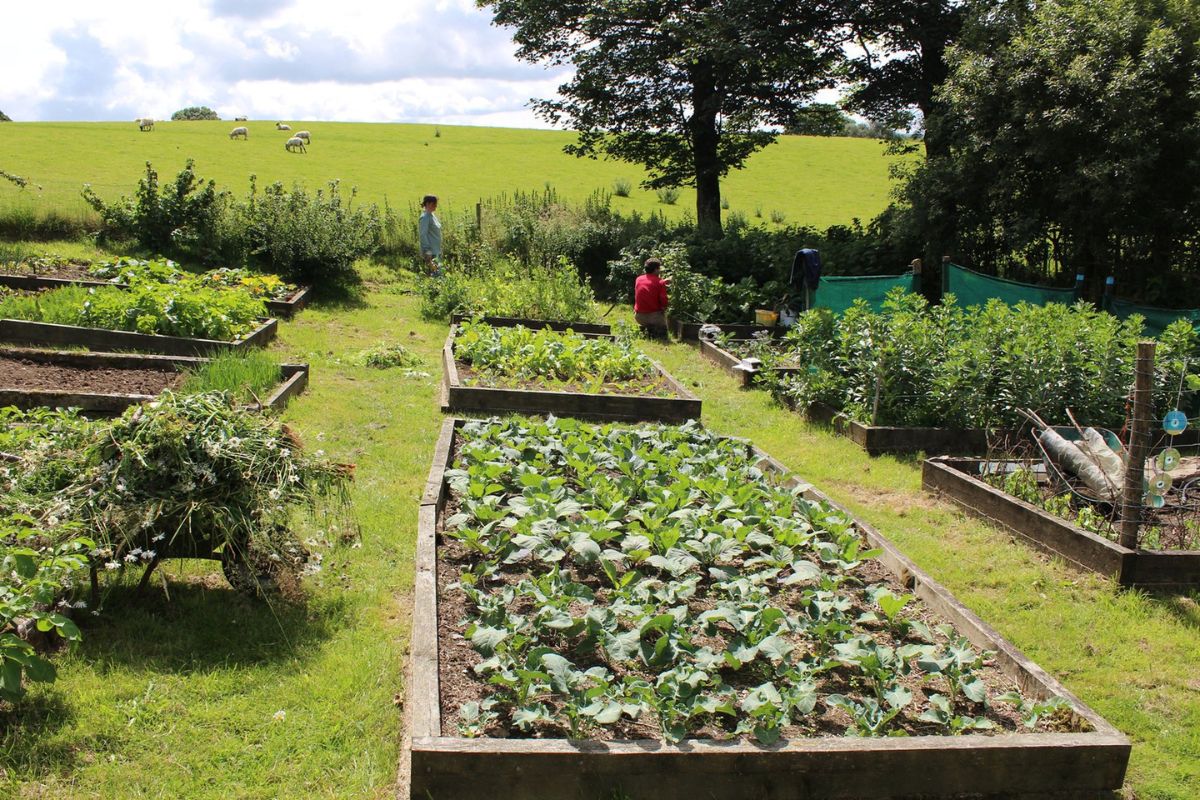
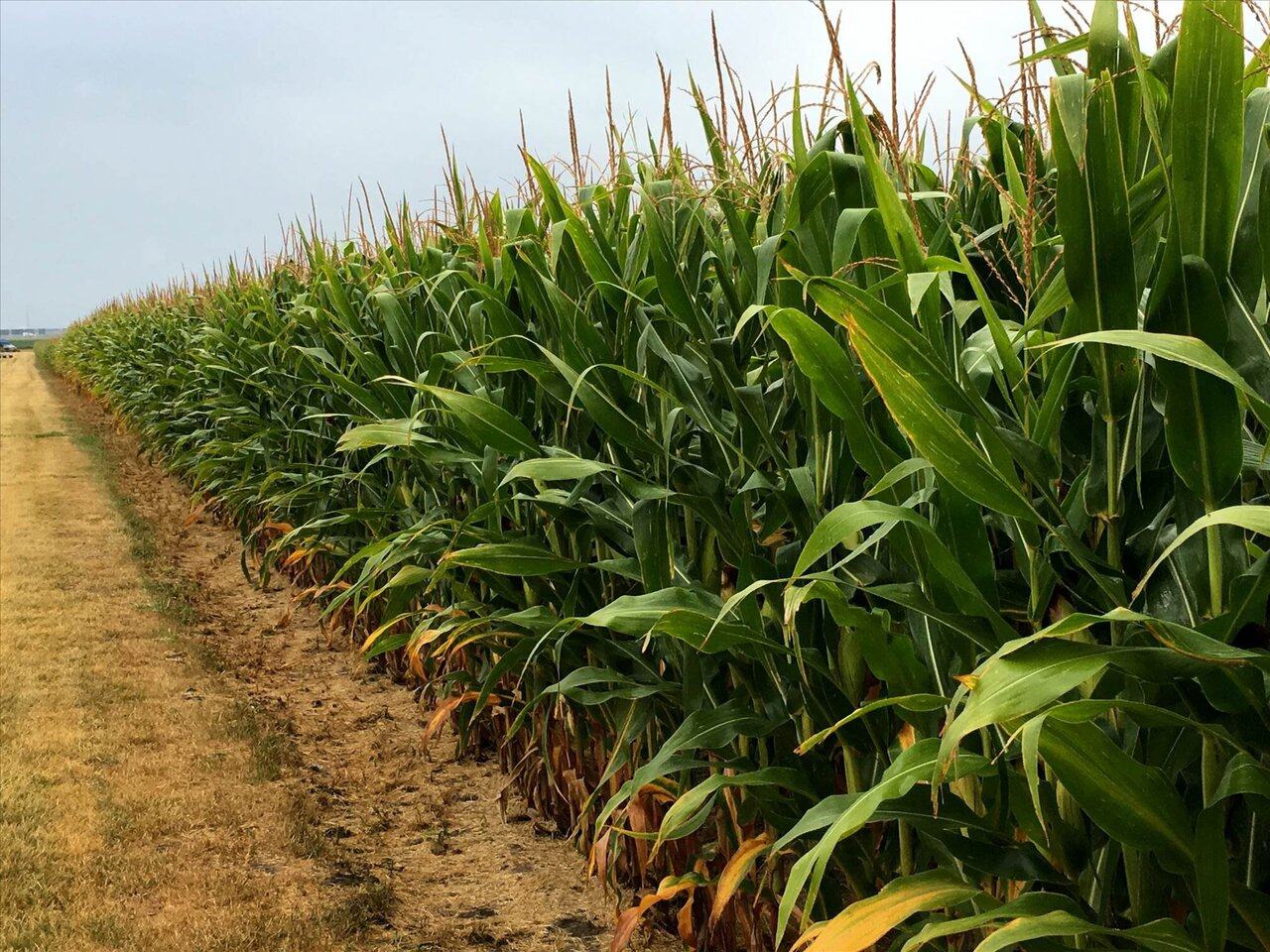
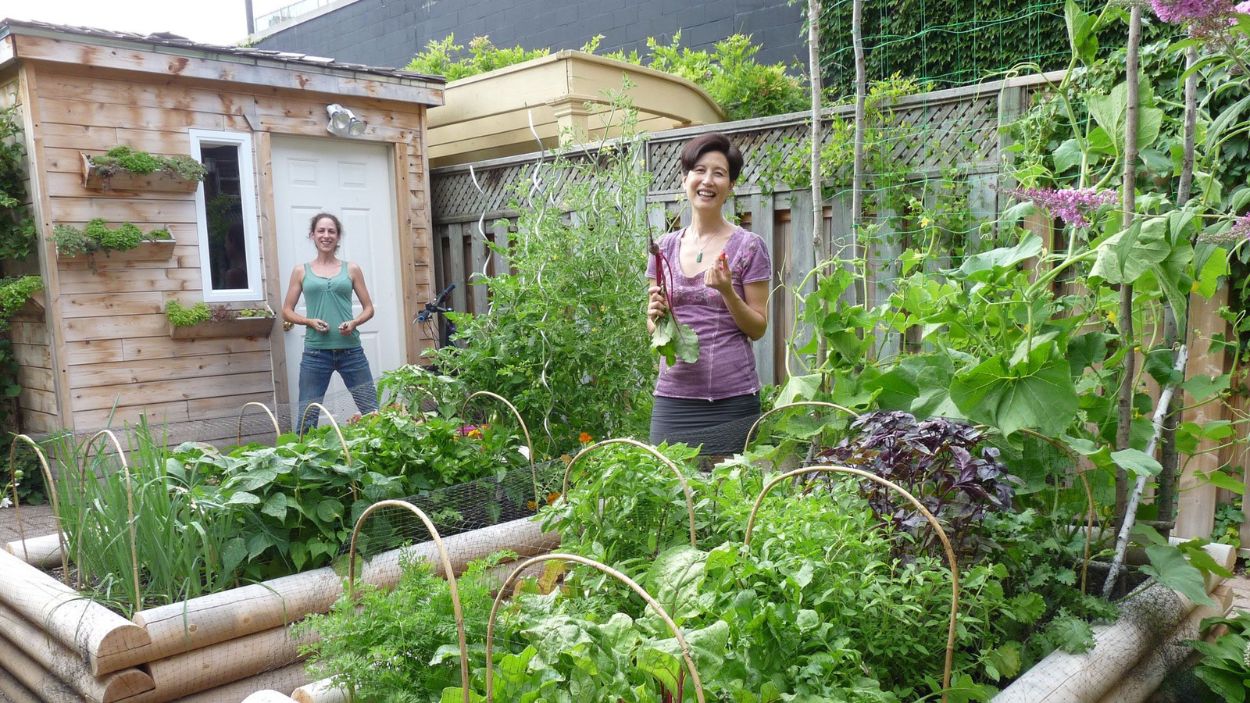

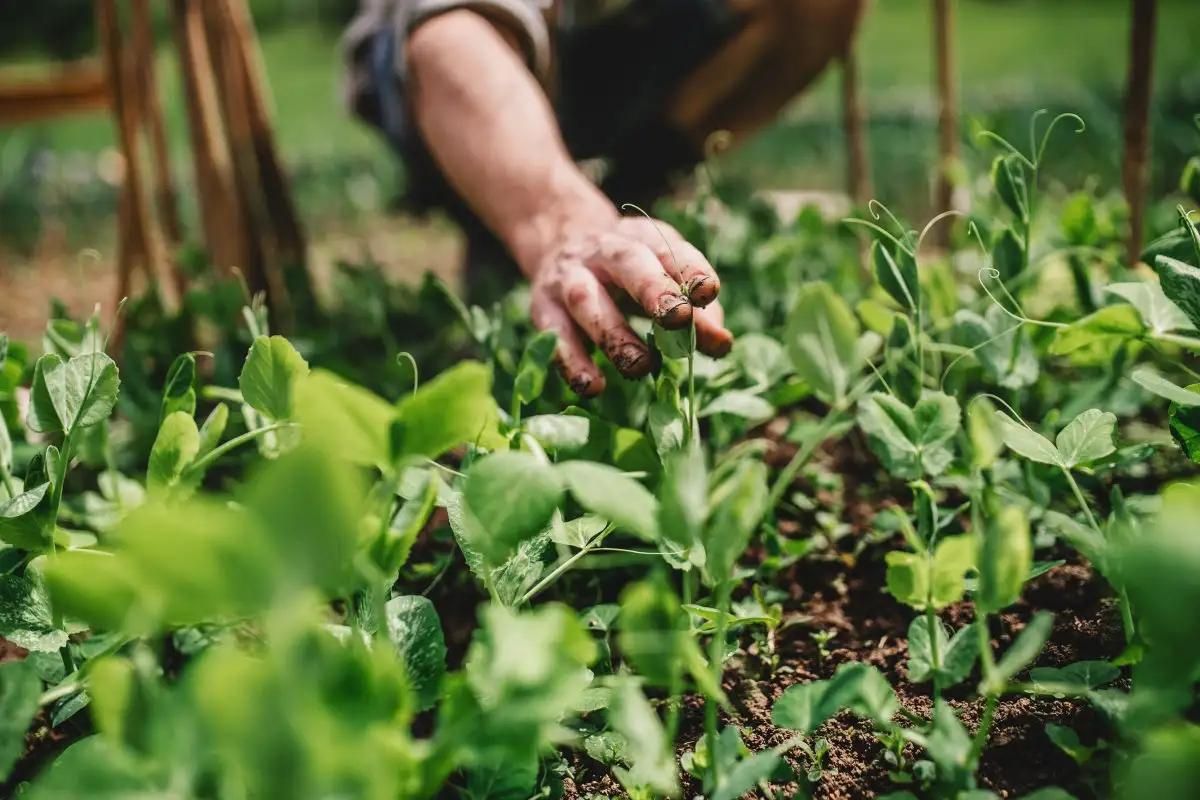
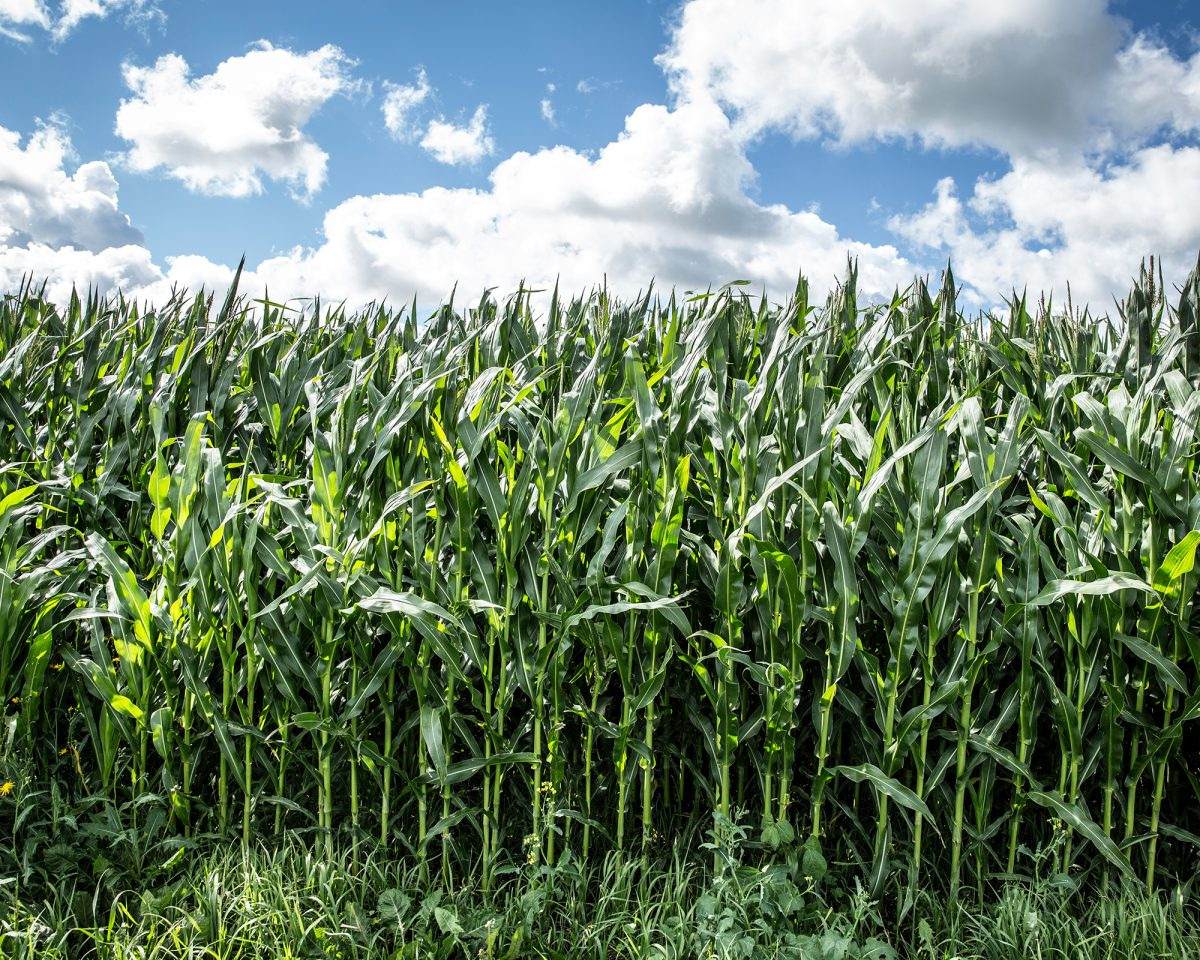
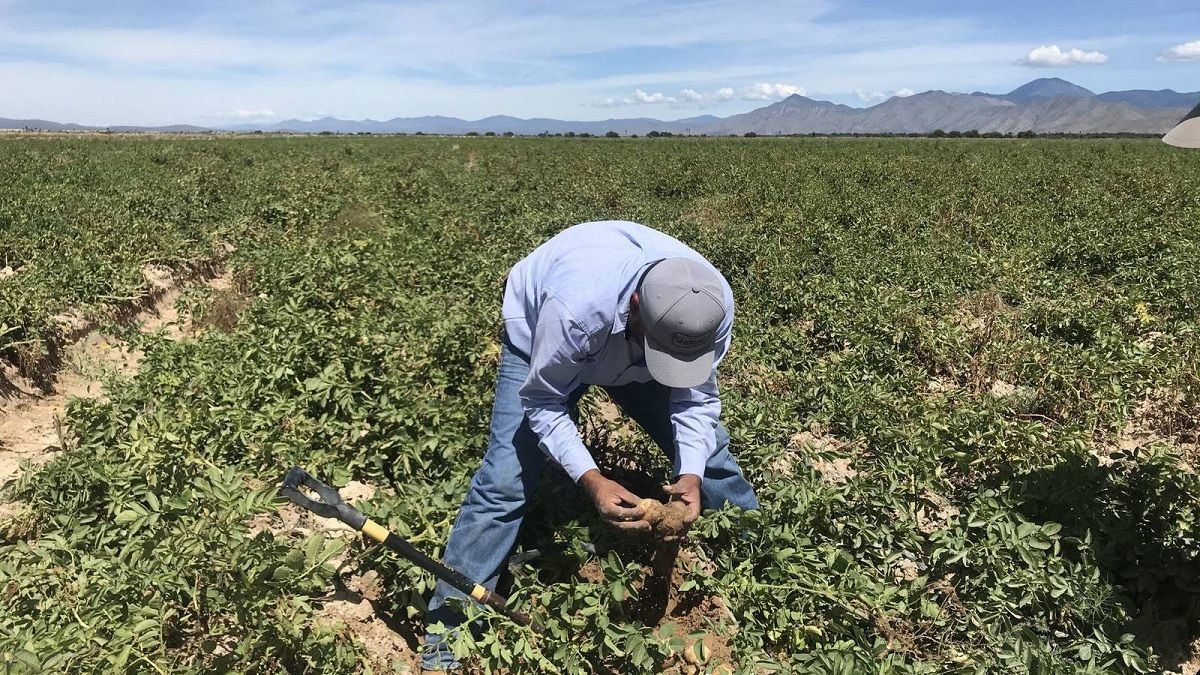



0 thoughts on “What Nitrogen Fixation And Crop Rotation”